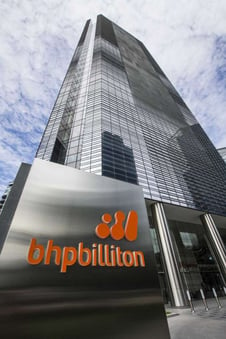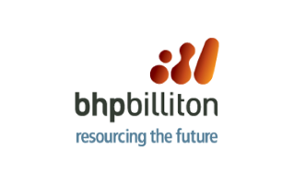The mining behemoth has completed a significant share buy-back, for which there was strong shareholder demand. BHP has also announced a $1 special dividend (as anticipated). Shareholders and traders (perhaps on holiday) should note that the last day to trade cum-dividend on the Johannesburg Stock Exchange is 8 January 2019 with the special dividend ex-dividend date on the JSE being 9 January 2019.
“Buy-back complete and special dividend announced”
BHP Billiton [JSE:BHP]
Share price: AUD33.49 ASX, GBP16.32 LSE, ZAR298.75 JSE
Net shares in issue: 2.11 billion LSE and JSE
Net shares in issue: 3.21 billion ASX
BHP Billiton Limited and BHP Billiton PLC is a dual listed company; PLC has a secondary JSE listing
Market cap: R630 billion JSE
Fair value DCF: $23,20, A$32.15 on ASX, £16.16 on LSE (including a 12% discount) and R291 per share on the JSE at an exchange rate of ZAR18.00/£
Note: fair value is based on forecast commodity prices and not spot prices
Portfolio Buy
What you need to know:

The mining behemoth has completed a significant share buy-back, for which there was strong shareholder demand. BHP has also announced a $1 special dividend (as anticipated). Shareholders and traders (perhaps on holiday) should note that the last day to trade cum-dividend on the Johannesburg Stock Exchange is 8 January 2019 with the special dividend ex-dividend date on the JSE being 9 January 2019.
The market price for BHP's off-market tender buy-back was determined with reference to the Australian Securities Exchange and was A$32.14. There were various tender discounts varying between 10% and 14%. The final buy-back price for the off-market buy-back was A$27.64 per share, which was a discount of 14%. Because of strong demand for the $5.2 billion (in USD) buy-back, BHP had to cut back demand by more than 50%. This means shareholders receive just over 40% of tendered shares. A vote of confidence indeed.
BHP Billiton Petroleum's new office space, image taken by Bret Coomer, Staff
The special dividend of $5.2 billion, equivalent to the buy-back, or $1, per share, is based on the reduced number of shares in issue of a combined 5,058 million on the Australian, UK, and South African share registers.The $5.2 billon buy-back (equivalent to AUD7.2 billion) resulted in 265.8 million shares being bought, which is 8.3% of the outstanding Australian listed shares and 5.0% of the combined Australian, UK, and South African shares.
All this was paid for from the divestiture of US shale assets, with net proceeds of $10.4 billion.
It is worth noting that BHP has returned $21 billion in the past two years – the equivalent of R300 billion or 70% of the market capitalisation of Anglo American.
Shareholders can look forward to more largesse in F2019. I estimate that the interim dividend and final dividend will be approximately $3.0 billion and $3.5 billion respectively, for a total of $6.5 billion.
Whilst the divisor does fall because of the buy-back, the effect on earnings per share is around 1% so I’m not going to make a change to my estimates just yet. In any event, there are other variables, not least iron ore and currency, that would have a potentially greater effect on EPS. For example, a 1% move in iron ore prices has a 1% earnings effect and a 1% move in the Australian dollar affects earnings by 1%. Therefore, I currently anticipate EPS of $1.85 in F2019 and $1.70 in F2020.
Shareholders own a company in which iron ore now contributes 40% of profits, copper 23%, and petroleum and coal both at 17%.
The share price is fairly pitched. At the current share price the EV/EBITDA ratio is 5x and the forward dividend yield 5%. The company has also reduced debt so the debt to equity ratio is forecast to be less than 12% over the next two years. I forecast EBITDA of $21 billion a year for the medium term with earnings of $8.0 billion.
Allowing for the variability in commodities I am keeping my DCF fair value at a conservative level. Fair value DCF is $23,20, A$32.15 on the ASX, £16.16 on the LSE (including a 12% discount) and R291 per share on the JSE at an exchange rate of ZAR18.00/£
There are 2.1 billion shares in issue on the LSE and the JSE and 3.0 billion shares in issue on the ASX. There is a combined 5.1 billion shares in issue, allowing for the buy-back. The PLC register has 40% of the aggregate number of issued shares and the Ltd register holds 60% of the shares. South African shareholders hold 17% of the PLC structure and 7% of the combined entity.
In seeking direction on the JSE share price, check out at what the ASX share price has done the previous trading day as Sydney is 9 hours ahead of Johannesburg. Then adjust for the rate of exchange and the discount of PLC to Ltd , which has been around 12% for a long time.
Portfolio Buy

BHP retains solid fundamentals and offers value for those investors with longer run investment horizons seeking exposure to mining and commodities.